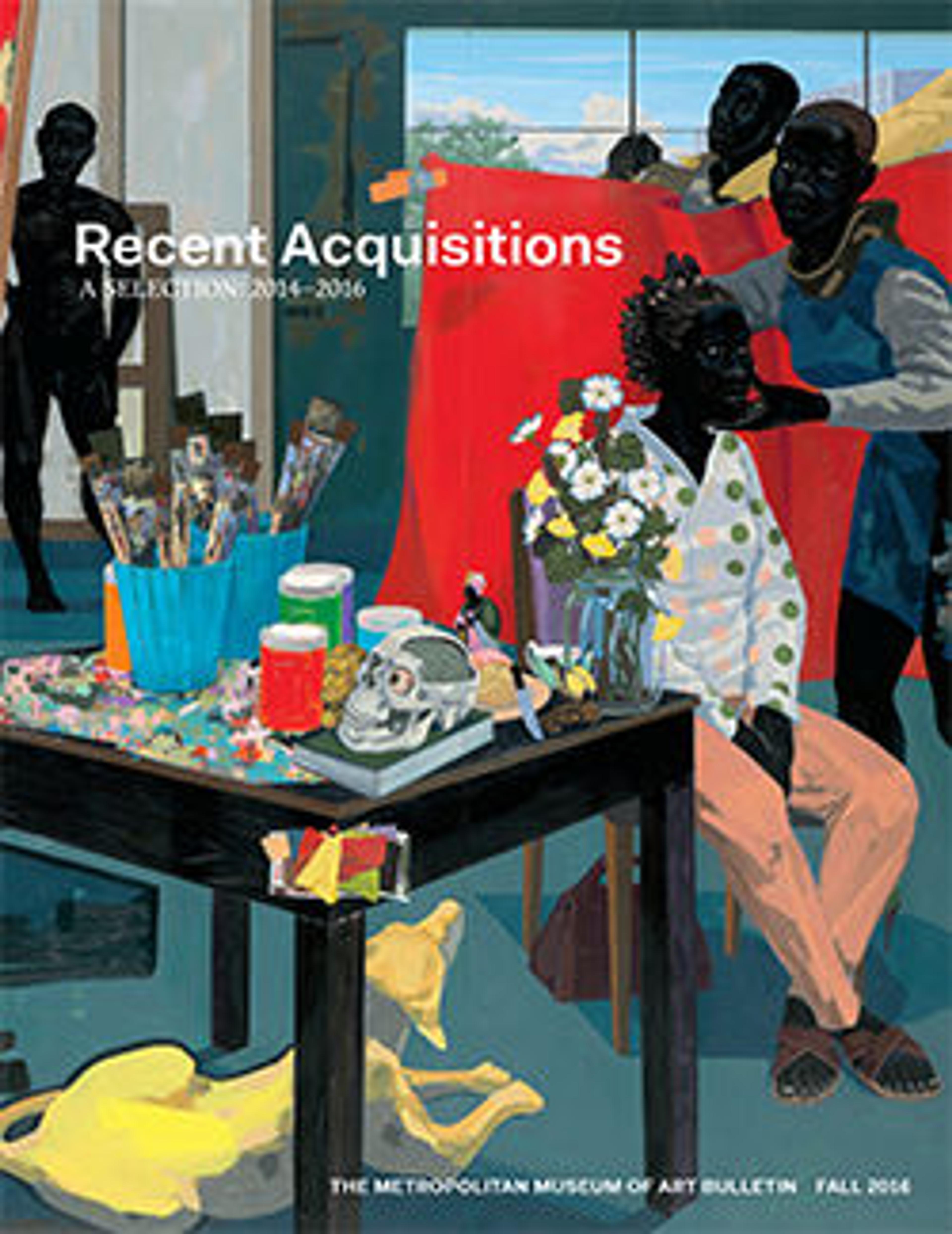Head of Saint James the Greater
Carved with virtuoso technical mastery, this majestic head of Saint James originally formed a full-length figure similar to the nearby sculptures from Poligny, France.
As a popular protectorate saint for pilgrims, James was revered throughout France and Spain. His melancholic appearance is counterbalanced by an extravagant wooly hat emblazoned with his symbol, the scallop shell. The commanding presence and serenity of expression is exceptional in 15th-century French sculpture. The carver was influenced by the great Burgundian court sculptor Claus Sluter, active in Dijon around 1400.
As a popular protectorate saint for pilgrims, James was revered throughout France and Spain. His melancholic appearance is counterbalanced by an extravagant wooly hat emblazoned with his symbol, the scallop shell. The commanding presence and serenity of expression is exceptional in 15th-century French sculpture. The carver was influenced by the great Burgundian court sculptor Claus Sluter, active in Dijon around 1400.
Artwork Details
- Title:Head of Saint James the Greater
- Date:1450–1500
- Geography:Made in Burgundy (?), France
- Culture:French
- Medium:Limestone with traces of paint
- Dimensions:14 1/8 × 12 1/2 × 9 1/8 in., 44 lb. (35.8 × 31.7 × 23.1 cm, 20 kg)
- Classification:Sculpture-Stone
- Credit Line:Purchase, The Cloisters Collection and Audrey Love Charitable Foundation Gift, 2015
- Object Number:2015.241
- Curatorial Department: Medieval Art and The Cloisters
More Artwork
Research Resources
The Met provides unparalleled resources for research and welcomes an international community of students and scholars. The Met's Open Access API is where creators and researchers can connect to the The Met collection. Open Access data and public domain images are available for unrestricted commercial and noncommercial use without permission or fee.
To request images under copyright and other restrictions, please use this Image Request form.
Feedback
We continue to research and examine historical and cultural context for objects in The Met collection. If you have comments or questions about this object record, please contact us using the form below. The Museum looks forward to receiving your comments.
